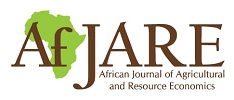Relationship between poverty and climate: Does climate variability drive rural poverty in Zimbabwe?
Carren Pindiriri, Jeffrey Alwang, Dhiraj Sharma, Fortune Mazvita Nyajena & Grown Chirongwe
Abstract
Zimbabwe has set poverty reduction targets in a changing climate, yet the implications of climate variability for poverty remain under-explored. Utilising household datasets to explore the association between poverty, cereal productivity and climate variability indicators, we observe a negative association between prevalence of poverty and variability of precipitation, despite evidence of lower cereal productivity in districts with higher precipitation variability. Semi-arid districts have higher precipitation variability and lower cereal productivity, but lower poverty prevalence than wetter districts. Agriculture-reliant districts are poorer than those relying on non-agriculture livelihoods, such as employment and remittances. The results reflect that households in regions with long-lasting precipitation uncertainty may adapt better to climate change. Hence, poverty reduction interventions in a changing climate should not only be anchored in historical weather developments; the local context also matters. In heterogeneous regions, where people in some areas have adapted to addressing weather challenges, strategies to address climate challenges must be flexible. Policies that diversify agriculture-reliant rural economies will reduce the impacts of climate change on poverty. The results further demonstrate the importance of education and wage employment in poverty eradication. Hence, upscaling the education of farmers and creating employment are critical strategies for fighting poverty in a changing climate.
